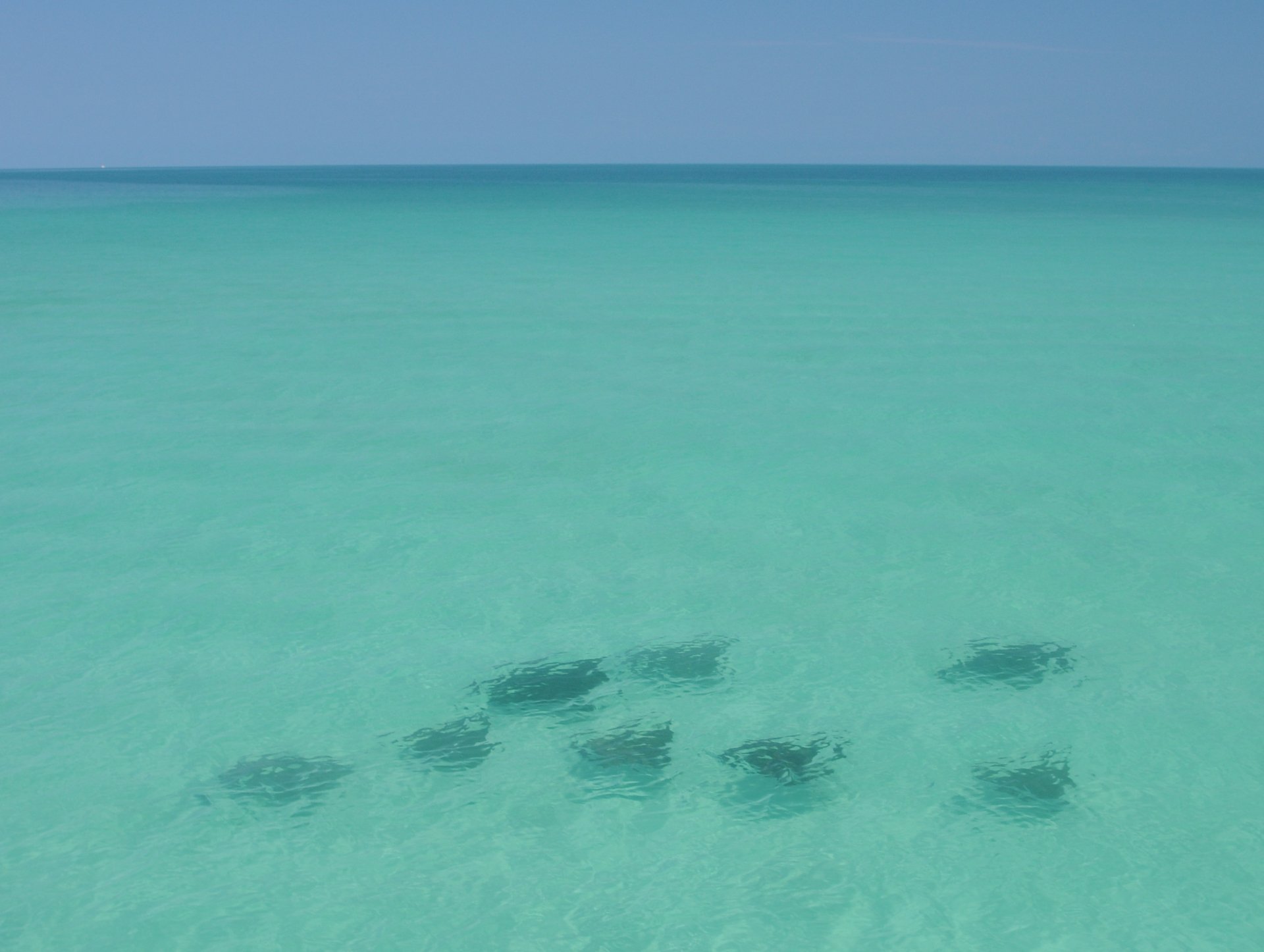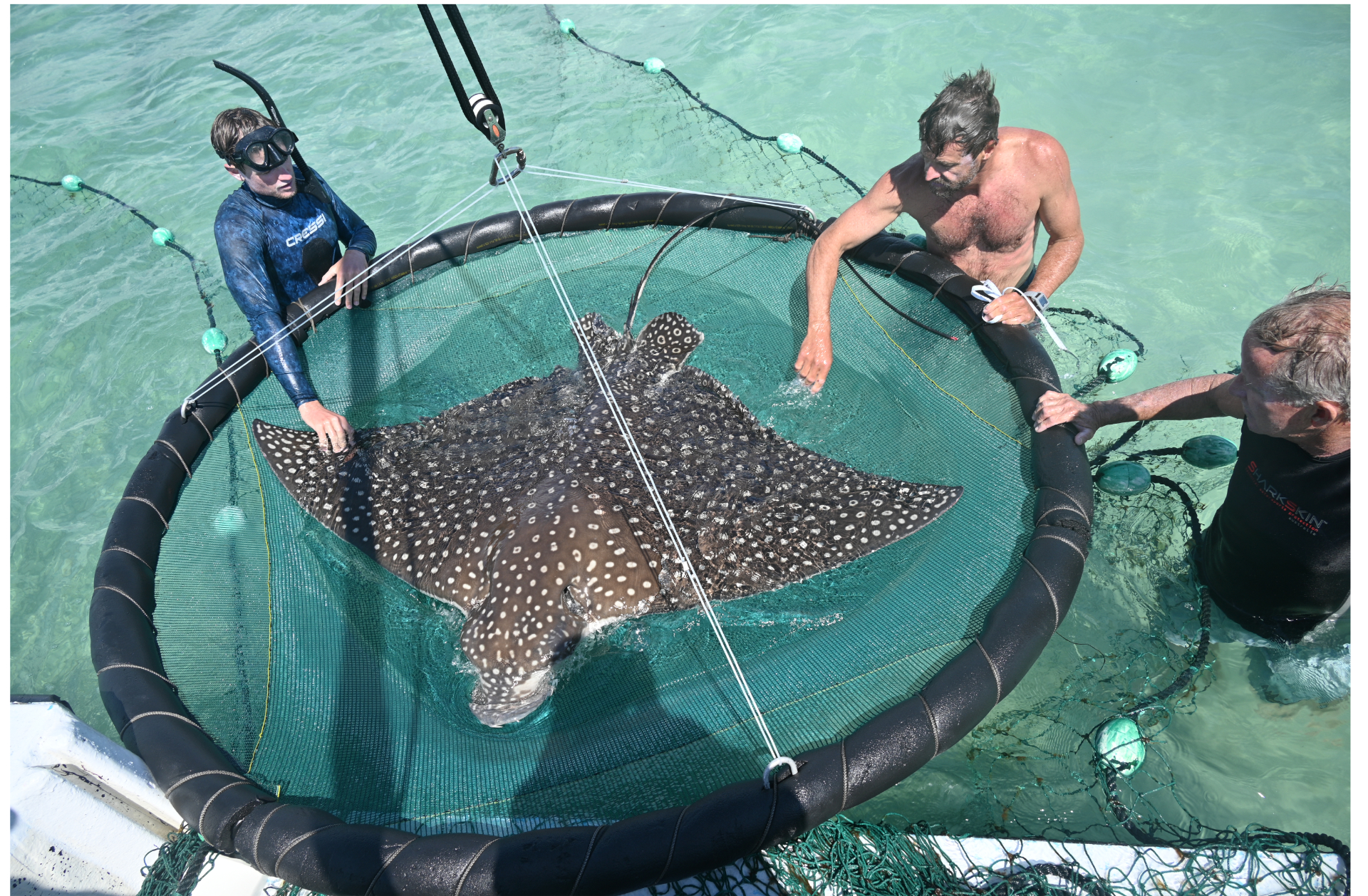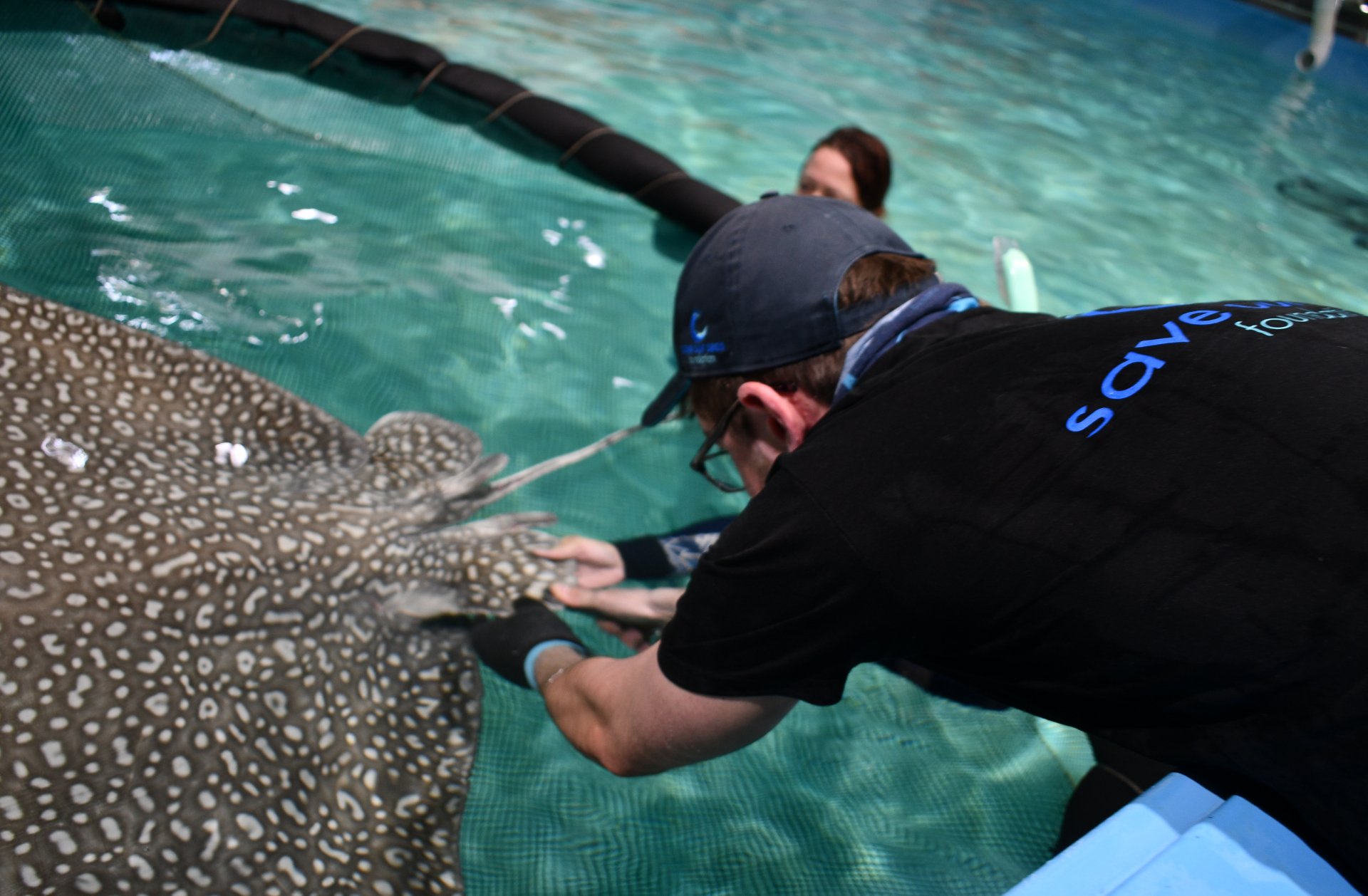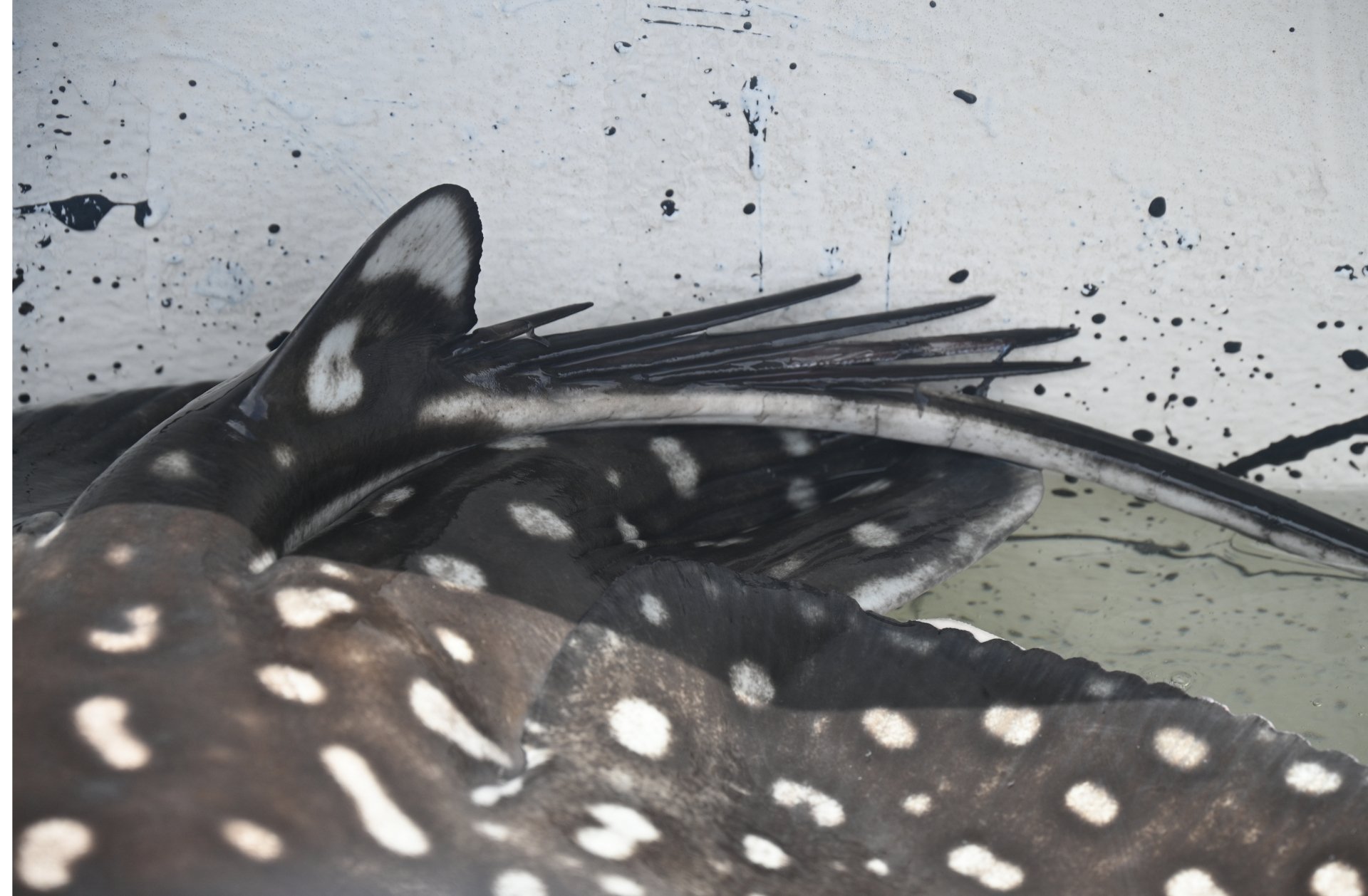Ray-sing the bar for eagle ray conservation via long-term monitoring and genetic sampling
Like all work in the field of Molecular Ecology, our eagle ray research comprises three broad components:
1. Fieldwork,
2. Labwork, and
3. Bioinformatics (data analysis)
Our last blog gave some background about the field of Molecular Ecology. This blog will describe the fieldwork our team has conducted for our eagle ray CKMR project. When it comes to fieldwork for any project involving sharks and rays, the hardest part is often finding and capturing the animals. Whitespotted eagle rays (Aetobatus narinari) are typically present in Sarasota Bay from Spring – Autumn each year. During these months, researchers plan sampling days during which they survey within and just outside of Sarasota Bay in a specially designed research vessel, looking for silhouettes of eagle rays beneath the surface of the water. While eagle rays can and do form larger aggregations in and around Sarasota Bay, they are usually observed swimming by themselves, but are occasionally found in small groups.

A small group of eagle rays observed over in shallow water just outside Sarasota Bay. Photo © Kim Bassos-Hull
Once an eagle ray silhouette is spotted (no pun intended), the process of capturing and “working up” the ray begins. The research boat drops a net in the water and quickly encircles the ray, creating a large net corral. Researchers then climb into the water and manually tighten the net, making the enclosure smaller and pulling it closer to the boat. A smaller secondary net on a crane-and-pully system is then used to lift the ray into a water-filled tank on the boat, where the ray’s size is measured and its sex recorded.

An eagle ray about to be lifted into a pool of water on the boat for measurements and genetic samples. Photo © Kim Bassos-Hull
Then, fin clips are taken from the skin at the trailing edge of one of the pelvic fins using a small biopsy tool and the fin clips are stored in ethanol, which dries the tissue and prevents DNA degradation. Oftentimes, a tag is put on the ray that allows researchers to identify that individual animal in the future and/or track its movement, depending on the type of tag (ie. PIT and acoustic tags). During the time researchers are taking measurements and fin clips, they monitor the ray’s behaviour in the onboard oxygenated tank.. Once all data and biological samples are collected, the ray is then lifted back into the ocean via a specialised pulley system and released. This process is repeated for each ray in the net corral if multiple individuals are caught in one set. Once all rays have been measured and sampled, the search for another ray begins.

Collecting a fin clip for DNA analysis from an eagle ray in Mote’s research facility. Photo © Kim Bassos-Hull
Sampling eagle rays is time- and labor-intensive (and can also be quite fun). Some of the eagle rays we observe are BIG (> 6ft in width), which means that handling them requires extra care. Handling any ray with a stinging barb (eagle rays are a type of stingray and can have multiple large barbs) requires mindfulness to avoid getting pricked. They are also incredibly strong and have large muscular pectoral fins that “fly” them through the water. Our team is very careful to ensure the safety of researchers and animals during fieldwork.

Some eagle rays have not just 1, not just 2, but FIVE (or more) stinging barbs. Researchers are very careful handling the rays to ensure that no injury is caused to people or animals. Photo © Kim Bassos-Hull
Researchers with Mote’s Sharks and Rays Conservation and Research Program and the Sarasota Dolphin Research Program – Brookfield Zoo Chicago have been collecting fin clips from eagle rays every year since 2009, resulting in over 700 fin clips to-date. DNA from these fin clips has already been used to learn a lot about eagle rays near Sarasota Bay and helped us understand patterns of population connectivity within the Gulf of Mexico and around the world. We are currently using DNA from these fin clips to identify relatives and estimate population abundance using methods that were not accessible several years ago. Genomic technologies and statistical algorithms are continually evolving, so the information we can learn from DNA increases with each year, making long-term sampling programs like this one exceptionally valuable.
